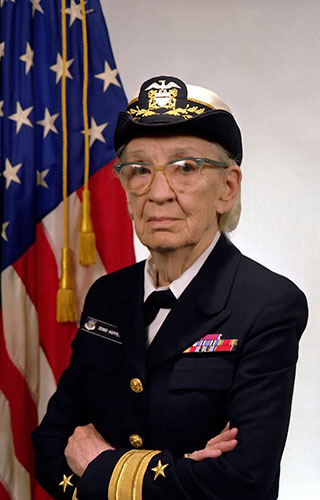Today, the Veterans of Foreign Wars (VFW) recognizes U.S. Navy Commodore Grace Murray Hopper.
Hopper, known to many as “Amazing Grace,” joined the U.S. Naval Reserves in 1943 during World War II. She was assigned to the Bureau of Ordinance Computation Project. This is where she became only the third programmer of the world’s first large-scale computer known as the Mark I. Hopper would go on to master the Mark I, Mark II and Mark III systems.

U.S. Navy Commodore Grace Murray Hopper |
During her esteemed career, Hopper would master the UNIVAC I, the first large-scale electronic computer where she created a program that translated symbolic math codes into machine language.
Hopper retired from the Naval Reserves in 1966 as a commander, but was later called back to active duty one year later to help standardize the U.S. Navy’s computer programs and their languages. She was promoted to captain in 1973 and later retired at that rank in 1977.
In 1983, Rep. Philip Crane (D-Ill.) introduced a bill on behalf of Hopper to recognize her outstanding military accomplishments and promote her to the rank of commodore. Although he had never met Hopper, he heard many great stories of her selfless service and dedication and felt compelled to see her receive a special presidential appointment to flag officer. She was later elevated to rear admiral in November 1985, making her one of few women admirals in our history.
Although Hopper died in 1992, her legacy lives on as a renowned mentor and giant in her field. She now rests peacefully in Arlington National Cemetery.
This is part of a series of VFW articles to be published throughout March 2020, highlighting women veterans who have made outstanding contributions to our military and society.